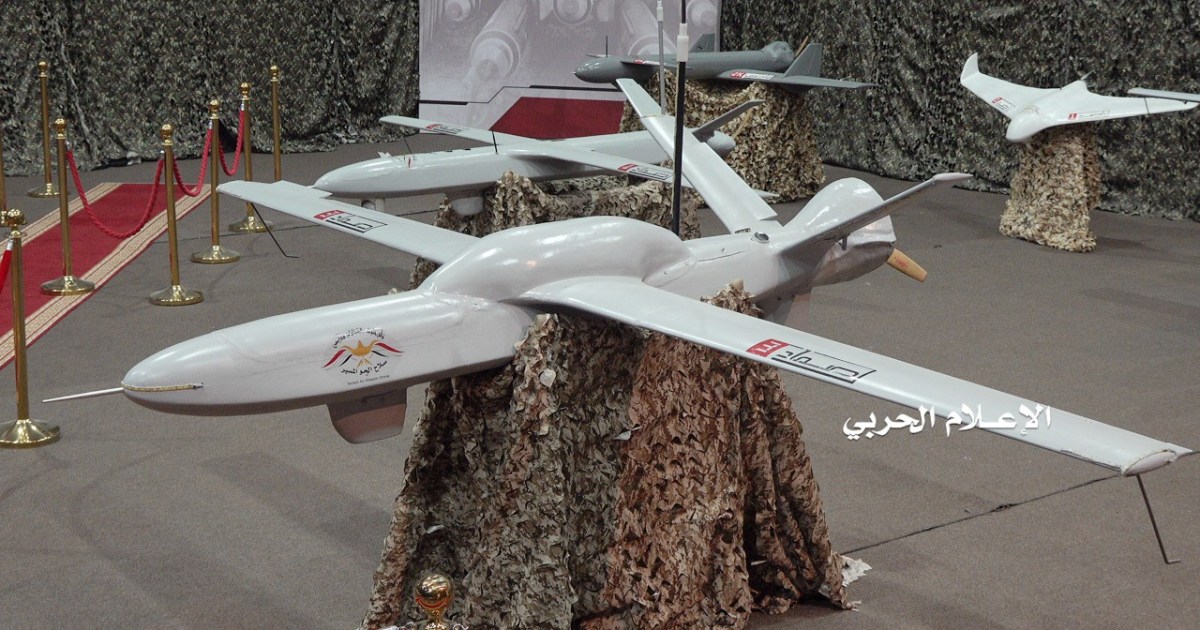Drones manufactured locally in Yemen, capable of flying hundreds of kilometers, pose a threat to the UAE, which has been targeted twice by the Houthis during the past two weeks.
In their attacks, the Houthis used these aircraft, in addition to ballistic missiles.
They are also using these weapons to target oil and other facilities on Saudi territory, in response to the intervention of Riyadh and Abu Dhabi - within a military alliance - in the war in Yemen in support of government forces.
The Houthis targeted the UAE after incurring losses on the ground in Yemen at the hands of the "Giant Brigades" loyal to the Yemeni government and backed by the UAE.
Analysts stress the low cost of this strategy, the most advanced of which is the "Sammad-3" march, which can carry 18 kilograms of explosives, has a range of 1,500 kilograms, and a maximum speed of 250 kilograms per hour, according to Houthi media sources and independent experts.
squadron tactic
James Rogers, assistant professor at the London School of Economics, says the Emiratis and Saudis are finding it difficult to fend off these attacks.
"It is known that it is difficult to counter the attacks of drones and missiles, especially when they are used as part of the squadron tactic, as many weapons are launched at the same time to try to evade the existing defenses."
According to Rogers, the Houthis use drone attacks and medium-range missiles at low altitude and low speed, which is why it is difficult for conventional radar to detect them.
And the British expert - who had previously inspected aircraft manufactured by the Houthis - continues that "many of the drones were locally-made copies of military systems manufactured by countries and similar to those made in Iran."
He says it's powered by easy-to-obtain commercial drone engines, wiring, control systems and cameras.
This ensures that the Houthis are able to secure these weapons at a low cost.
A 2020 Center for Strategic and International Studies report said these drones "use GPS guidance and fly autonomously along pre-programmed waypoints" toward their targets.
On March 11, the Houthis revealed 7 new types of drones, but without specifying their range and advantages.
It included a new version of their most advanced aircraft, the Samad 4.
new reality
On the other hand, a senior Emirati official stresses that the Houthi threat to his country will not become the "new reality", at a time when the wealthy Gulf state is seeking to enhance its defense capabilities, and said that the UAE possesses defensive capabilities at high levels and is constantly seeking to modernize them.
The UAE signed a multi-billion dollar agreement to acquire THAAD defense missiles manufactured by the US company, Lockheed Martin, in 2011.
Last week, it reached an agreement to obtain defense missiles worth $3.5 billion with a South Korean company, while Saudi Arabia relies on American Patriot missile batteries to defend its territory against these attacks, and Riyadh also has 80 air defense radars, but many of them are decades old systems. precedent.
But this system has a mixed record in countering the launching of missiles and drones from Yemen, and experts say it is not designed to counter low-flying drones.

